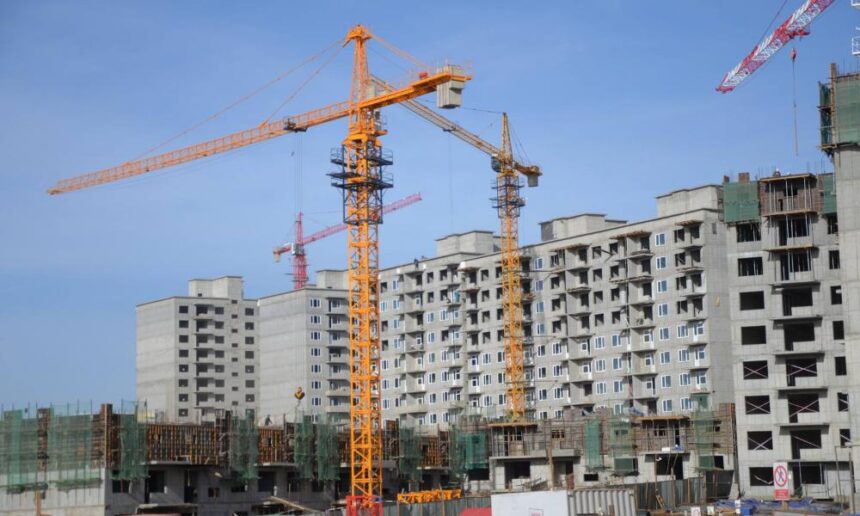The construction industry is laying unconscious in the emergency department. With mad high prices at the peak its whole body is shivering, in spite of all efforts, nothing has changed for almost a year. If this patient dies, all who invested almost one trillion tug into 470 unfinished buildings, as well as 7800 hopeful prepaid homeowners, and 78000 employees will be lost. The industry people ask the government to inject money and think that everything will be OK as before. Is this the right way?
One must have the right diagnoses before attempting to save the life of a patient and to cure from the disease properly. If the diagnosis is wrong, no treatment can help.
The basic reason behind the disappearing productivity, declining competitiveness are distortions made by industry players, under pressure by the three powers: supplying, regulating and buying. These distortions are a direct consequence of ignorant, premature actions of the industry. Distortions in material, human and financial resources have heated the soaring prices. The majority of products were being imported because the domestic material supply could not match the demand growth. The businesses of a large economy after catching a glimpse of this absolute profitable demand stored the construction materials with longer and cheaper credit and sold them when they wanted. The continuing import of labor caused a loss of long-term policy in nourishment of national labor and their skill development. As for financial resources, the feverish demand for housing caused a mortgage loan with as high as 20 percent per annum, i.e. a borrower was paying for 2 apartments for the duration of 5 years. This gave a false expectation to investors. Banks supplied short-term high interests and enormous amount of loans to apartment builders and buyers at the same time.
The special characteristic of the construction industry, the issue of human safety, is the reason why it is heavily regulated. The professional monitoring department, who is supposed to regulate this, became a barricade rather than a stepping-stone. In international practice, the architectural company who designed the building is also responsible for the safety of the building from the beginning until the end of the project. But our controllers come only after the construction is completed just to grant or not grant the permission for operation, depending on the size of the bribe. In any case, the residents have already moved in and settled down. This is just one of many cases showing that it does not matter who is responsible for what.
The construction company acquires the land, constructs the building and makes sales to customers while it should be responsible only for building. As a result, they become their own clients. As the Mongolian saying goes: “The bull rests until the axe is raised.” That is why even the president Elbegdorj recently warned the people about possible collapse of a building in Ulaanbaatar. While they do everything, none is of high quality. There is no specialization. If everybody did what they, are best at doing, insurance service would develop and would place a double control over the operation risk. The government must make sure that the safety requirements are met, but should not perform the safety check by itself.
During the recent flood, many expensive cars were destroyed in the basement of a newly constructed apartment complex of Zaisan area. Consider who is responsible for the damage?
It is almost physically impossible to get permission for land title, for connection with the infrastructure and for operation. There are thousands permissions at hundreds of levels. Direct and indirect bribes to the national, city and local bureaucrats raise the cost of apartments by almost 1/3. Many construction companies are at fault here; land speculating companies are twice at fault.
The construction companies hunt for the most profitable customers instead of supplying products for particular market segment depending on purchasing power. Nobody has yet constructed buildings for lower income households in growing ger districts of Ulaanbaatar. Newly constructed apartments were occupied by families or their children who have been living in apartments anyway. Thus, the felt town is growing with the speed of light. Banks are not helping this process by favoring short-term profit and pushing up the price. They are even sidetracking by offering 2 percent per month mortgage loan. They daydream that they can still keep selling houses to poor people with the price set by the most powerful purchasing customers. In the end, the customers pay the huge bank interests and bribes for bureaucrats given by land speculators. This has now reached its limit.
The construction industry is shivering from high fever under the stretch of soaring costs in supply and regulation from the top and plummeting purchasing power of customers from the bottom. This tension will remain until the decrease of stretching forces. Otherwise, it will snap and everything will restart anew. The point is to decrease these restrains and not to keep injecting more money drops.
It will take time to see the disappearance of land and permission bribes, the decrease of bank interests and the purchase of apartments by ger districts people with their salaries. The question is, “can this patient survive until that day?” You reap what you sow. Unfortunately, we always expect a different type harvest from our seeds.
Friday, August 14, 2009.
UB Post







